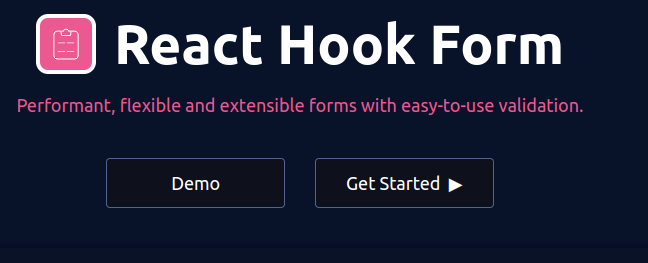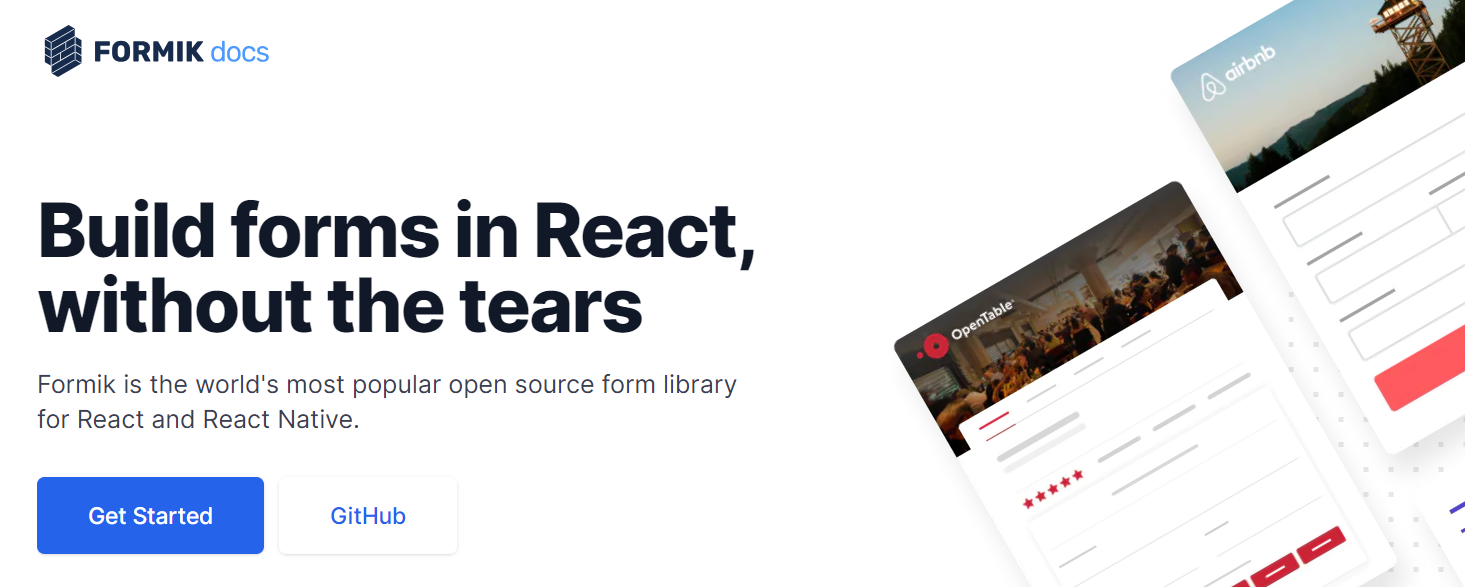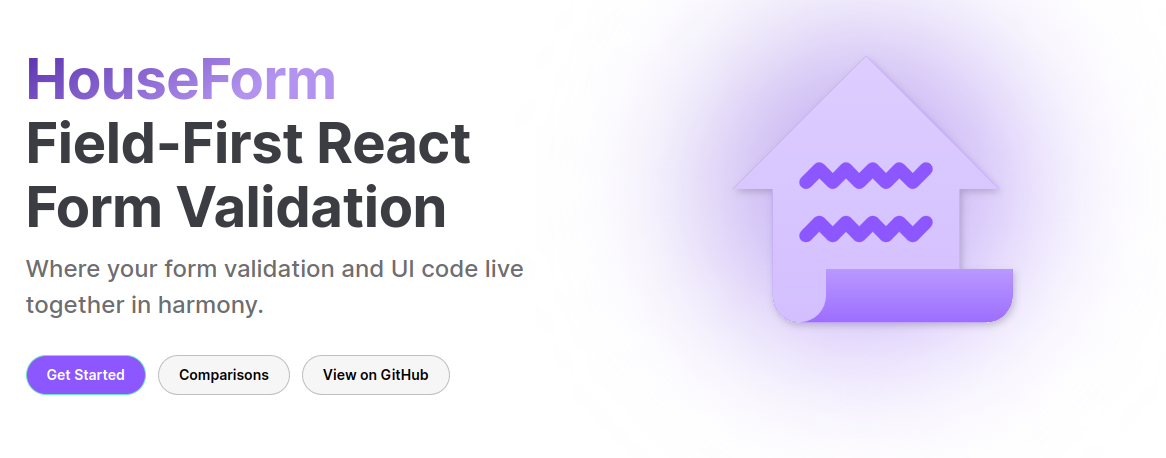Web forms are an important aspect of web development as they are used to interact with users. For instance, they can collect user data through sign-ups/ins or sending messages.
You can create forms in React from scratch. However, that approach will consume a lot of your time. Luckily, you can use ready-made forms packaged in the form of libraries.
React form libraries are a collection of pre-designed forms you can import into your React applications. Such libraries help you save time and are created to be responsive to different screen sizes.
These are some of the reasons to use React form libraries;
- Simplified form management: Forms are used to collect user data. In a typical form submission process, the state changes a lot. For instance, when a user signs in, the state changes from a visitor to a logged user. React form libraries provide a simpler way to manage these forms, from handling submissions and validation to state management.
- Integration with UI frameworks: Most React form libraries integrate with popular UI component frameworks like Material UI and Bootstrap. You can thus use forms from such frameworks and enjoy consistent styling in your forms.
- Easy validation: Most React form libraries allow flexible validation of your forms. Validation can happen at the form or input level.
- Error handling and feedback: Most libraries provide features for highlighting error messages. You can thus get alerts when your forms fail and know why.
These are the best React form libraries you can start using today;
React Hook Form

React Hook Form is a performant and extensible forms library with an easy-to-use validation. This open-source library is available for web and mobile apps through React Native.
Features
- Performant: Forms created using this library are small and fast. React Hook Form does away with unnecessary re-renders.
- Supports validation: React Hook Form allows you to add validation to your forms to ensure users submit valid data. For instance, you can set the minimum number of characters for a password or describe the email format needed.
- Comes with a form creator: Instead of relying on and editing existing components, this library gives you control over form creation. The templates are already styled; you can add and delete fields effortlessly.
- Comprehensive APIs: Depending on your needs, you can use different React Hook Forms APIs. For instance, you can use </>useController API in your controlled forms. On the other hand, you can use the </>useFormState to enable individual form state updates.
Formik

Formik is a scalable and performant React form library that works with web and mobile applications. This library can be installed using package managers like NPM or Yarn. Formik allows you to build high-performance forms with less code through its battle-tested solutions.
Features
- Adoptable: Formik does not rely on external libraries like MobX and Redux to handle state. Thus, you just need to install this library and create performant forms.
- Declarative: You don’t have to worry about the boring, repetitive tasks, as Formik takes care of that. This approach makes it easy to focus more on the business logic as the library takes care of things like handling submissions and validation.
- Intuitive: This library relies on a plain React state and props. Debugging and testing forms become a breeze as this library does not focus on outside ‘magic’ but on React’s core principles.
- Supports validation: You can validate your React forms at different levels while using Formik. For instance, you can implement field-level, form-level, dependent, and custom validation.
Uniforms

Uniforms is a powerful React library that you can use to create forms from any schema. Users can enjoy using out-of-the-box built-in fields that simplify form creation by reducing code by 51%. The library is known for its good-looking components while supporting the separation of concerns.
Features
- Integrates with various schemas: You can use Uniforms with JSON schema, SimpleSchema, GraphQL, and Zod.
- Wide range of themes available: Uniforms works with most UI styling frameworks like AntD theme, Bootstrap, MUI, Material UI, Semantic UI, and Plain HTML.
- Customizable: The fields provided by the components of this library are fully customizable. You can define custom fields based on theme dependent approach or the abstraction level schema.
- Supports validation: You can implement asynchronous or inline form validation or both in your components.
- Automatic state management: Uniforms do not rely on external state management libraries like Redux and MobX.
React Final Form

React Final Form is a high-performance subscription-based form state management tool for React. This library ‘subscribes’ to all changes by default. However, you can fine-tune your forms and indicate fields that React Final Form should observe during state management.
Features
- Modular: Components from React Final Form are broken down into small and reusable bits. This approach allows developers to ship only the necessary bits to their application.
- High performance: The performance of your forms can degrade as the application grows. This library allows you to specify which fields are notified when the state changes, increasing your app’s performance.
- Zero dependencies: React Final Form is a small package that does not rely on other libraries like Redux for state management.
- Compatible with hooks: You can flexibly compose the functionality of your forms using the hooks API.
- Customizable: You can fine-tune the components on React Final Form to suit your needs.
- Supports validation: You can validate the inputs on the entire form or at the input level.
KendoReact Form

KendoReact Form is a fast package that helps developers manage the state in their forms. This tool is compatible with generic and KendoReact components. This package is part of over 100 professionally designed components in the KendoReact library.
Features
- Supports custom components: You can create your React forms from scratch and let KendoReact Form take care of state management.
- Flexible validation: You can ensure that your forms capture the right information by validating them at the field level or on the entire form.
- Customizable: KendoReact Form has many components to import to your application. You can add new fields or delete or change the contents based on your brand needs and style.
- Flexible layouts: You can rely on the built-in components to guide you in structuring your forms. This library allows you to choose from horizontal and vertical layouts to suit your needs.
- Component integration: This tool has built-in features that allow users to edit and customize their forms. This approach ensures that the KendoReact Suite has a consistent approach to forms.
Formsy-react

Formsy-react is a form builder for React applications. This library allows developers to build and validate different forms of components. Install Formsy-react using Yarn and start using it right away
Features
- Supports custom elements: Formsy-react allows you to create any form elements and enjoy validation.
- Error handling and validation: Formsy-react has built-in features that display error messages and offer feedback based on the validation results.
- Supports validation: You can validate your components at the form or input levels.
- Handlers: You can use handlers like ‘onSubmit’ or ‘onValid’ for different states of your forms.
HouseForm

HouseForm is a form validation library for React. This library is powered by Zod, allowing you to parse almost all operations that various data types need. HouseForm allows your UI code and form validation to live in harmony.
Features
- Headless: HouseForm does not feature any UI components. Thus, it allows you to bring your components and use its validation capabilities.
- Field first: This tool allows you to consolidate your UI and validation logic in the fields.
- Flexible API: HouseForm does not force you to use one validation approach. Thus, you can mix and match validation methods based on what suits your needs.
- Runtime agonistic: You can use HouseForm with any environment that runs a React app.
- Lightweight and fast: The entire package is just 4KB GZIP. HouseForm has also been tested and found to be faster than existing alternatives.
React-reactive-form
React-reactive-form is a library that allows you to build a tree of form objects in the component class and then bind them with native form control elements. Install this library using NPM and start importing its components into your React application immediately.
- Zero dependencies: Forms can get pretty big as your application grows. React-reactive-form has no dependencies, meaning you don’t have to worry about performance much.
- Subscribers: This feature makes tracking the status and value changes of controls in your forms easy.
- Validation: React-reactive-form has various validators you can use in your forms. You can also use custom sync and async validators if your tasks are more specific.
- Select APIs: Depending on the task, there are several APIs to select from. For instance, you can create large forms with the ‘FormGenerator’ API. You can also use the ‘FormArray’ and ‘FormGroup’ APIs to manage your forms better.
- Nested forms: React-reactive-form allows you to create forms inside another form. This approach is perfect when you are dealing with complex or hierarchical data.
Conclusion
You now have various React form libraries at your disposal. The library choice will depend on the features you are looking for and its ease of use. You can use several libraries in different components of your application.
Check out our article on the best React chart libraries you can use in your applications.

